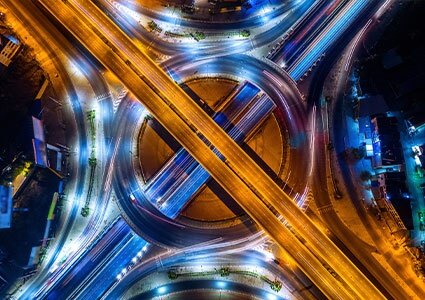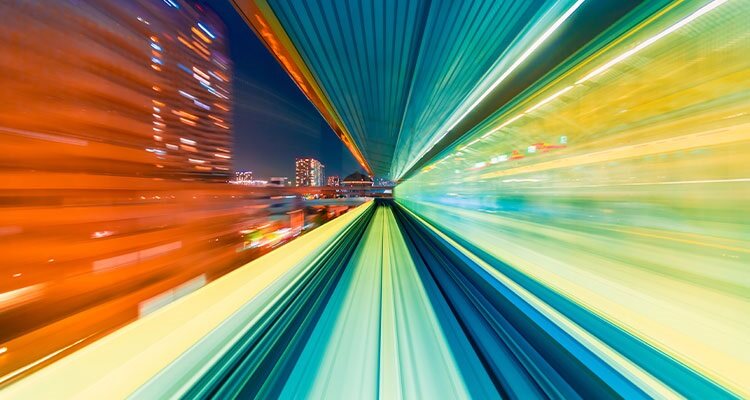Paul Campion, CEO of TRL, asks what do we talk about when we talk about public transport?
When I say the words “public transport”, do you automatically think about buses and trains? I do, but I’m not sure why. Is it because buses and trains are shared (I might have to sit next to a stranger!)? Or is it because they run to a timetable, on a fixed network, so I have to go to the trouble of getting to the bus stop or the station? Think about taxis and minicabs, do you consider them when you think about public transport? They are public transport modes we share with the driver and with all the other passengers that ride them over time; although because they will start and stop where we like and not just at fixed places, many forget to consider them public modes of transportation. And what about planes? Do you think of a first-class flight to Singapore as “public transport”?
 What determines how we think about public transport? In our society, could it have something to do with class. We understand that public transport is a good thing in general, but who really likes to think of themselves as “the general public”? I’m special, and you probably are, too.
What determines how we think about public transport? In our society, could it have something to do with class. We understand that public transport is a good thing in general, but who really likes to think of themselves as “the general public”? I’m special, and you probably are, too.
For transport professionals, public transport is a solution to various challenges, such as congestion and environmental sustainability. It is so obvious a solution to the problems we face that it’s hard for us to understand the social, political and economic forces that seem to drive people away from public transport: why is the public choosing not to use it?
From a historical perspective, public transport was synonymous with mobility. Just a century ago, walking was the dominant means of mobility for most people. Cities were compact, and people’s daily routines revolved around their neighborhoods. But as industrialization accelerated and populations boomed, the demand for efficient transportation options grew. Buses, followed soon by the railways, democratized mobility, allowing people to travel greater distances with ease. The expansion of public transport networks allowed for greater social and economic integration across neighborhoods by reducing the physical barriers to movement, which in turn prompted the economy to grow.
However, the economic growth that these changed transport possibilities helped to create generated consequences that would, in turn, weaken public transport as we think of it. As the automobile became more widespread, and consequently, affordable, the allure of personal vehicles grew, and it reshaped all urban planning decisions, leading to suburban sprawl and a more car-centric infrastructure—think motorways, curbside parking, and out of town retail and leisure facilities. In many towns in our country, it’s inconceivable to leave the house without a car, and subsequently without worrying about its unavoidable consequences, like petrol or parking. Of course, this shift brought with it issues of noise, pollution, and dreaded long commutes stuck in traffic, which led many to wonder, “what am I doing this for”? We re-learnt the age-old lesson of democracy: my freedom comes at the limit and at the cost of your freedom. This is embodied in the old saw “you are not stuck in traffic; you are traffic”.
Now, as we navigate the twenty-first century, we’re exploring new ways to enhance our quality of life and we are finally back to considering all the benefits of public transport. New telecommunications and computing technologies enable other ways for us to take part in economic, social and political life.
Transforming transport

At a most basic level every human society in history has had to deal with the fact that we never knew where anything was; that’s why we invented technologies like the bus stop and timetable…so we could coincide in time and space with a means of transport. Suddenly, for the first time in human evolution, everything and everyone is instrumented in some way. We know (or could know, anyway) where stuff is. Working out how we can use that information to create better lives (and how the benefits can be shared out fairly) will not be quick. In his famous study of the early years of the electricity industry, Networks of Power, Thomas Hughes illustrated the way that technology disseminated through an economy. To begin with, a new technology is used to replace elements of the existing system one for one, wherever there can be cost savings. Eventually, however, the technology enables different ways of doing things that change the system itself. With electricity this took at least fifty years. Computing too, took time to have an impact. Robert Solow famously observed in 1987 (40 years after the first commercial electronic computers were introduced) that the computer age was visible everywhere except in the productivity statistics, and another forty years later we can see some industries (such as music and film) radically transformed by those technologies, but others (including transport) are still in the first phase…their fundamental structure and business model is barely touched; using IT and telecommunications just to do this or that thing a bit faster or cheaper. But it won’t stay like that.
So, how do I imagine public transport will change in the future? The only thing I can be certain of is that we have the opportunity to radically transform our transport systems for the better. To find out how, we’ll need to listen to both users and non-users and aim to design our public transportation system to make it appealing to everyone. We’ll need to build in flexibility to adapt, to accommodate features that might be a huge expense to retrofit. We’ll need to look at other countries and be willing to see which things they are doing better than us. And maybe most importantly: we need to be willing to continue to invest in public transport.
To be able to design something better, we need to define what “better” is, and that requires us to be alert to the different ways we think about notions like “public transport”. If public transport is about, and for, the people, then we need to understand what will serve the people and bring the people along with us for the ride.
For a list of the resources used in this article, please contact the editor.
Paul Campion
TRL is a global center for innovation in surface transport and mobility. TRL is a wholly owned subsidiary of the Transport Research Foundation (TRF), a non-profit distributing company limited by guarantee, and established for the impartial furtherance of transport and related research, consultancy, and expert advice.
